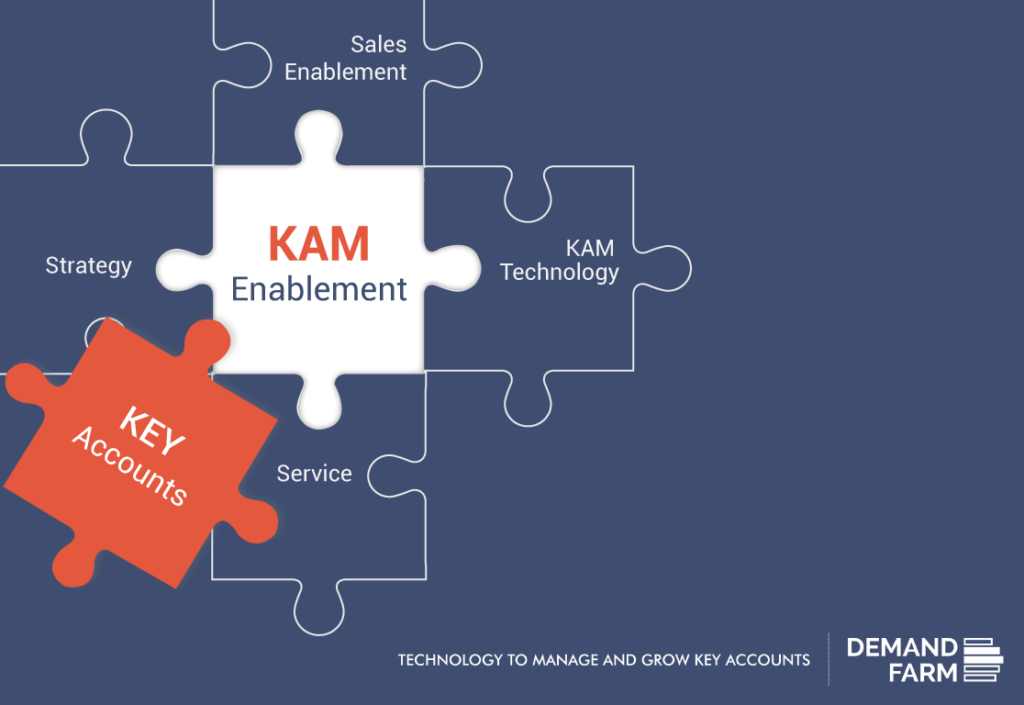Churn Rate vs Retention rate – What’s the difference?

Customer retention is directly proportional to customer loyalty, reflecting how satisfied your customers are with your products and services enough to return for more. This goodwill is a crucial metric, particularly during a business’s growth phase. Understanding your customer retention and churn rates is essential, as these metrics help pinpoint loyal customers and those at risk of departing, allowing you to devise effective strategies to retain them. What’s the difference between churn rate and retention rate? Simply put, churn rate is the percentage of customers leaving your organization while retention rate is the ones that stay with you. You can influence retention positively by aligning on controllable factors like quality of product or services or by enhancing customer support. However there are some uncontrollable factors like customer’s budget, changes in processes or objectives or other factors that you won’t be able to influence directly. It’s always good for an organization to aim for a higher retention rate and lower churn rate. What is the customer churn rate? Churn rate can refer to everything from boycotting a brand to opting out of their subscription services to frequent product returns or poor ratings. A higher churn rate can lead to you spending more money on acquiring new customers which is not sustainable in the long run. If your business is in its earlier stages, a churn rate of 3-7% is agreeable. But you however need to try to bring down this number as well as you go further years in your business. Calculating corn rate is necessary for a business to see how well it is performing. How to measure customer churn rate? Churn rate is measured by taking into account the number of customers you lost over a specific period to the customers you had at the start of the period. One thing to note is that it does not take into account the additional new customers you acquired during the same period. No. of customers at the start of the period – No. customers by the end of the period ———————————————————————————————X 100 = Annual Churn Rate The number of customers at the start of the year For instance in the FY 2022-2023 you started off with 1000 customers and by the end of the year you lost 300 customers, your churn rate is 30%. What is customer retention rate? Retention rate signifies the amount of customers who have signed up for your products or services and continue to use them after the first cycle as well. A higher retention rate has a better ability to predict your future. You will have a fair idea on how much money is going to come in so you can make your financial plans better for investments and expansions. How to calculate retention rate? Retention rate = (Customers at the end of a period – Total new customers during that period) / Customers at the start of the period x 100 Retention rate helps you build better insights into specifications of your business. For instance, it will help you answer: What’s the most liked feature of your product that’s bringing your customers back? What sales or support actions contribute to higher retention or churn? What is the behavioral pattern of customers who stay vs the customers who leave? What is a good retention rate? One way to get an idea is by considering industry standards. For example, the monthly churn rate for SaaS companies is 3-8%, implying that the average retention rate should fall within the 92-97% range. Furthermore, we understand that the average annual churn is 32-50%, indicating that the average customer retention rate should be between 50-68%. However, it’s important not to solely compare your retention rate against the industry average. Why monitor customer retention rate and churn rate? Monitoring churn and retention rates is crucial for analyzing your business trajectory. A high churn rate usually indicates a need for product improvement. Understanding customer preferences and behaviors towards your product, and then examining churn or retention figures, can help identify specific areas for improvement. A high churn rate often signals potential business decline. Customer churn can be due to various factors like pricing, product or service quality, or a mismatch with customer needs. It’s important to remember that customers evolve over time and it’s crucial for you to adapt to their changing needs. Poor customer service can also contribute to churn. Key account managers must foster strong relations with their clients, especially high-value ones, to ensure retention. Some ways to bring down churn rate: Implement processes and workflows: Consistency in customer interactions and service delivery can significantly enhance satisfaction and reduce churn. Establishing clear processes helps ensure that all customers receive the same level of service and support. Enhance communication: Personalized communication is key to understanding and meeting customer needs. Large organizations might benefit from segmented surveys to gather detailed feedback and adjust services or products accordingly. Adapt to customer evolution: As customer preferences and needs change, so should your offerings. Staying relevant and responsive to market changes is crucial for maintaining customer interest and loyalty. Proactive engagement: Identifying potential issues before they escalate can greatly improve customer relationships and reduce the likelihood of churn. Keeping a close eye on customer feedback and behavior can help preempt problems and demonstrate your commitment to customer satisfaction. How can a KAM tool help? A KAM tool can help you manage and enhance client relationships especially with the top revenue contributors. Here’s why you need a KAM tool to bring down your churn rate: Provides centralized data management – When you use a KAM tool, you’re essentially having the records of all your client information at one place. From account history to contact details and transaction records, you have everything at one place for easy access across teams for all stakeholders. With easy access to data you can serve and understand your customers better. Improved communication – With a KAM tool, you can record customer information, feedback, and preferences all at one place
Account Management Reinvented: The Role of Digital Mindset in Accelerating Sales Enablement

Consider these scenarios: Scenario 1: Before: “Good morning, Mr Brown. Thank you for meeting with me last week. Based on our discussions, we’ve created a proposal. It has just been mailed to you and you should receive it in a week. I look forward to continuing our discussions then!” After: The phone dings and announces “You’ve got mail!” A notification pops up – “Your proposal from The Good News Company needs your attention!” Scenario 2: Before: “Yes, Sarah! We’ve done business with Xtreme International for years, and that sparse file is all we have to show for it. Jacob, who handled the account for us was terrible at filing reports and updating records. When he left last month, he took everything he knew with him. If you need information, I’m afraid you’re going to have to start from scratch!” After: “Yes, they’ve been an important client for years. Everything to do with our dealings has been carefully recorded and stored in our Customer Relationship Management (CRM) system. Here, let me show you how it works so you can extract the data and information you need to service this account.” Scenario 3: Before: Brendon is trying to find the best contact within an important clients organization. He shortlists several people from previous reports filed. He must now call and find out if any of these stakeholders are still relevant to the task he needs to do. ‘There must be a better way to do this’, he thinks. After: Brendon logs into his company’s Org Chart software. He is so pleased to be able to see, at one glance, all the key stakeholders in his key account. He knows immediately who can best influence the decision he will need when he presents them with a great growth opportunity. Any information he needs about his key accounts contacts is now at his fingertips. And it’s all up-to-date! Scenario 4: Before: “We’re sorry! There seems to be a recurring problem with this download. Check your internet connection and try again later.” After: Dear Ms. Johnson, we notice you’ve been having problems downloading our most recent whitepaper. Here’s a link that lets you have immediate access. We apologize for any inconvenience this may have caused you. We’d like to offer you a $50 discount on your next purchase with us. Do any of these scenarios sound familiar? Of course, they do! We’ve all been Brendon or Sarah or any of the others to some degree or another. But wait! Before and after what?? For those of you who haven’t guessed, the right answer is digital transformation. Building a Digital Mindset Digital transformation is the integration of digital technology into various aspects of an organization. It has created a fundamental shift in how businesses operate and deliver value to their customers. It has become a strategic priority for all businesses, intending to stay relevant in the ever-evolving marketplace. One of the critical elements for successful digital transformation is creating a digital mindset within the organization. A digital mindset is an approach to thinking that focuses on embracing change, adapting to new technologies, and constantly seeking innovative ways to solve problems and improve business processes. It’s about understanding the opportunities and risks associated with digital technologies and using them effectively to optimize business performance. In today’s competitive business environment, a digital mindset is no longer optional for businesses; it’s essential for staying relevant and competitive. As technology continues to evolve rapidly, sales teams must use modern tools and strategies to stay ahead of the curve and drive business growth. Let’s explore how a digital mindset is powering the next wave of growth in account management and its subsequent impact on sales enablement. Watch Now: Prasad Varahabhatla (Senior Director, Sales & Data Operations at Philips) shares about Digital transformation within sales function Understanding Key Account Management and Sales Enablement Before understanding the role of a digital mindset, let’s take a look at the fundamentals of key account management and sales enablement. Key Account Management: It’s a strategic approach to managing and nurturing relationships with a company’s most valuable customers or ‘key accounts’. These clients typically bring in the most revenue or have strategic value. Effective Key Account Management involves building strong relationships, understanding customer needs, and delivering exceptional service. Sales Enablement: It’s the process of providing sales teams with the necessary tools, resources and training to sell more effectively. It includes everything sales teams need to better understand their customers, communicate the value of their products or services, and close deals successfully. The Role of Digital Mindset in Key Account Management Check out our Masterclass to level up your Key Account Management on the topic ‘Making Account Plans Actionable, Measurable and Sustainable’ A digital mindset can transform Key Account Management, enabling sales teams to adapt and thrive in the ever-changing B2B landscape. Here are some ways in which a digital mindset influences Key Account Management: Embracing Technology: A digital mindset encourages sales teams to make the best use of technology to improve their account management processes. By employing digital tools, teams can streamline their workflows, automate repetitive tasks, and focus more on high-value activities, such as relationship-building and strategic planning. Information-led decision-making: A digital mindset emphasizes the importance of decision-making based on the data available. Sales teams can draw on data analytics and AI-powered tools to gain insights into their key accounts, identify new opportunities and make more informed strategic decisions. Personalization: Digital tools and strategies allow sales teams to offer a more personalized experience to their key accounts. By leveraging data and AI-powered tools, teams can better understand their customers’ journeys, preferences, needs and pain points. This allows them to tailor their offerings and communicate more effectively. Agility and Adaptability: A digital mindset creates an agile and adaptable approach to Key Account Management. This means sales teams can quickly adapt to changing market conditions, customer expectations, and technological advancements. This ensures they stay ahead of the competition. Impact of Digital Mindset on Sales Enablement The
When Sellers Become Trusted Advisors!

Frederick Reichheld of Bain & Company researched on prescription for cutting costs and discovered that increasing customer retention rates by as little as 5% can reflect an increase in profits by 25% to 95%. Traditional sales enablement involved ‘enabling’ sales teams with the right information at the right time to make the right selling decisions to important prospects. In the post-pandemic era, Sales Enablement when it comes to Key Account Management is a continuous process stretching from discovery to customer retention. With a large number of buyer interactions happening digitally and taking place much before they reach out to salespeople, how does one ensure customer retention? Within Key Account Management practice, what does sales enablement look like? Michael McCarthy, Senior Business & Technology Consultant, Sales Enablement Duke Energy, had a lot to share on this topic in ‘The Changing Role of Technology in Key Account Management’ webinar featuring Forrester. Don’t Build a Long-term Relationship on Short-term Thinking The separation of Opportunity Management and Account Management is now more delineated than it used to be. For account management to successfully work, the team has to become a trusted advisor to the buyer within that organization. If that sort of interconnected relationship is not built between the sales team and the buyer organization, then a “won and done” relationship forms. There is only ‘short-term thinking’ when it comes to opportunity management. However, customer retention requires long-term planning which forms the basis of account management. From a Sales Enablement perspective in Key Account Management practice, Michael McCarthy had the following to say. “Sales enablement is being pulled and pushed more and more to deliver influence for the sellers that they can use to become that trusted advisor. And in order for us to be successful at that, we need to be able to very quickly create Insight that the seller can provide at the account level that the the buyers within the account can then use to make decisions.” If accurate, good, intelligent Insight is not provided for Key Account Management activities, then one cannot become a trusted advisor. Subsequently, teams also miss out on the ability to grow revenue substantially within a Key Account Management practice. What are some of the factors that go into having good insight? Leadership-Driven Change Management Salespeople often rely on being agile and it might feel a bit restrictive to have the concept of a ‘process’. Thus a transition to automated, data-driven sales processes will have a pushback from salespeople. Standardizing sales enablement processes within key account management requires change management. Within sales enablement teams, salespeople need to grow to become more data savvy to be able to provide data-driven sales processes. Data is not useful merely because of its availability, but in how the data is being used to position the team as a trusted advisor to the buyer. “They need to be able to push through data and pick data. That is going to help them in the customer’s eyes and not get overwhelmed by too much data,” says Michael McCarthy. Penny for Your Thoughts: Is Your Data Conversational? Another issue facing sales enablement is that the data needs to be conversational. An issue with the data available now is that it is centered around reporting, and it is not necessarily conversational. Sellers are often faced with this issue where if they go in with data to the buyer it looks like a piece of reporting numbers. Making sure that data presented can drive conversation is something that needs to be accomplished. CRMs are Just a Starting Point When data is automated, the ability to consolidate data into one of the very few places becomes important. This will prevent the formation of information silos and salespeople will have ready, easy access to consolidated data to support them. While CRMs are a good starting point for it, some data providers don’t integrate very well into your CRM. Besides, while CRMs provide a space for data aggregation, to ensure your sales is data-driven you have to extend further. Don’t Let Your Data Go To Waste A major issue is that a lot of times, sales leaders use PowerPoint presentations or they allow sellers to bring PowerPoint Presentations into a business review. They never open the CRM or piece together data that is put into an Insight-driven dashboard. To fully utilize the abundance of data available these days, sales leaders need to upgrade how they present in business reviews. Every Michael Jordan Needs a Scottie Pippen A point to note in existing sales processes is that often there is no data that is customer journey or buyer journey focused. In the middle of a customer journey, the seller is instinctively in a defensive mode. Getting the seller to move off of defense and bringing back a conversation should be on the agenda. A pivotal focus of Sales Enablement within the Key Account Management space is that the sellers need an assist in making that data conversational. This is difficult to achieve and requires years of practice. However, with advancing digital tools and technology, the gap reduces. For Michael McCarthy, we are moving in the right direction for this through digital transition in Key Account Management and over time with more prototyping, it can become more successful.
Sales Enablement – Everything You Need to Know

Sales Enablement in simple terms is any technology, process, or software that helps the sales team increase their efficiency. This may vary from giving your sales team the right information to move the sales acceleration forward, tools to handle their leads better, tools that help the sales team reach the prospects in a better way, or even the tools that help in sales training. If you have been following the stock and crypto markets lately, you know that something unprecedented has been working its charm. Nobody in their right mind would have predicted that a global shutdown in the 21st Century would ignite an investment frenzy that would put the Tulip mania of 1637 to shame. Total global equity traded in 2020 alone stood a whopping $137.64 Trillion, a steep 54.8% rise when compared to 2019 (according to Statista). So what made investors jump onto the money wagon? It takes a keen eye to understand all the factors that contributed to this bullish growth: The pandemic caused massive behavioral changes due to lockdown and free time. People were spending way less due to no social life and saving more. Relief packages from governments left them with some extra cash. The proliferation of digital apps and devices has made trading child’s play Growth in support ecosystems, such as digital banking and online media, has contributed to superior accessibility. In other words, it takes an entire ecosystem working in tandem for any major market movement to flourish and sustain, a prerequisite that Key Account Managers should aim for in the context of Sales Enablement. There is no denying that if you create the right ecosystem for your sales reps to succeed, they will naturally close more deals and drive higher revenues. But where do you begin? How do you find the right sales tools that foster sales enablement to the point that you can have a revenue squeeze of your own? Today’s blog aims to answer all this, and more. What is Sales Enablement? Sales Enablement is a framework that provides the sales team of the business with the necessary tools and resources that they require to close more deals and, in turn, drive more revenue. Let’s start with the basics and understand what it is about and the importance of Sales Enablement. The tools and assets that are leveraged can include knowledge, key information, content, and anything and everything that makes the sales process more optimized and geared for better conversions. It is a great practice for Sales Enablement to be owned by both Sales and Marketing teams as a function. While the marketing team often contributes with collaterals such as blogs and product guides, sales teams leverage them to the maximum by driving more contextual conversations with prospects. What is Sales Enablement Strategy? A Sales Enablement Strategy is aimed at helping sales reps to add more value at every customer touchpoint by defining a framework through which they can acquire all the necessary resources they need to effectively sell. In practice, it defines and lays down the entire path of reaching the target sales figures with the best change management and process adoption strategies. 5 Ways to Track and Measure your Sales Enablement Efforts If you look at the Sales top down, you will see that things are pretty measurable. As you travel down the funnel, things don’t seem so clear. We talk about increasing the sales pipeline, about white space opportunities, traffic, leads, warm, hot, cold but once we get to those numbers, no one can tell how to prioritize the projects on hand. This is the Sales Enablement Measurement conundrum. Organizations are uncertain about how to measure sales enablement efforts. How do we measure the alignment between marketing and sales? We have tried to resolve your conundrum here to some extent, using both, qualitative and quantitative methods of measurement. These are at best taken as indicators but will help your sales enablement efforts stay on track. 1. Track the lead-to-deal rate or lead-to-conversion rate The Sales Enablement team should be more focused on the bottom end of the sales funnel. This means tracking the lead to conversion rate. This is what will indicate the impact of your sales enablement strategies. Although not entirely, because the conversion rate depends on the number and quality of the leads. Besides this, this can be a good measurement index that also helps to identify trends over a period. Ask yourself the question “Will this project help me close more deals?” If the answer is “yes”, put it on priority. The others can be taken up later or delegated. 2. Measure win/loss rates against key competitors Sales is a race to the finishing line for every lead to be cracked. Your sales team needs your help and support all the time as they face the toughest of competitors. Monitoring your wins and failures and comparing them with your competitors’ wins and losses, will help you identify the gaps and fill that in. It will help you even further to know where you need to put your energy. Your CRM system will help you with this metric. 3. Amplify your content so that it influences a decision to buy Content is a universal weapon in the sales arsenal; right from the top end of the funnel to the bottom end. Supply your sales team with the right documents and decks but also, leverage the online medium to publish content through visual media. Then monitor it to see which one is more influential as the buyer is in the last stages of his buying decision. Scaling up online with content is good as you can measure the results of what works and what doesn’t. A good CMS and an analytics tool will help you in this task. This will be a perfect time to go for a sales enablement tool. Also, keep a track of and measure your content production – how many pieces of videos, infographics, newsletters, blogs, etc. produced in what month.
How to Optimize Your Business? – Thanks to Sales Enablement Tools

Nowadays, businesses need the right tools and data to remain competitive in their respective market. This makes now the best time that you check out sales enablement software. These are solutions that provide your team with the proper tools, knowledge, processes, and functions to maximize every sales opportunity. Sales enablement is more than just about lead generation. It covers an umbrella of functions such as recruiting, hiring, onboarding, training, coaching, providing resources, and evaluating the effectiveness of certain programs within the organization. Likewise, sales teams are not the only ones who benefit from such sales enablement tools. It can also help marketing teams, human resource teams, and more. It syncs every department within your organization and ensures that their goals are aligned towards one goal, which is an increase in productivity and efficiency of sales. With that said, here’s how you can optimize your business with the right sales enablement tools in the market. 1. Synchronize source of content and data As mentioned earlier, sales teams aren’t the only ones who get to use sales enablement tools. It can affect your whole department as well. It does so by providing a centralized source of content and data for all departments. This source of content and information is critical for engaging with potential customers and closing deals with them. Having a single source of truth for all your content can help you create a more streamlined and organized sales enablement strategy. This helps sales reps and other teams reduce wasted time and efforts on searching for and using relevant content to use for their campaigns and operations. This centralized repository of data can also help you improve your sales account planning, especially if you integrate it with your customer relationship management (CRM) software. DemandFarm is a powerful account planning platform for integrated planning where you can connect your data with external sources for a holistic approach. 2. Personalize buyer’s journey With your customer data organized and aligned properly across departments, this makes it easier for you to personalize your potential buyers’ journey and experience with your company. After all, not all customers need and want the same thing. You would often need to use different tactics to close a deal for each prospective customer. Through sales enablement tools, you can create a relevant and personalized sales account plan for each respective prospect. This serves as a guide that contains all the critical information you will need to interact and close a deal with them. As more customers begin to look for genuine and dynamic interactions, relying on a scripted sequence for each sales pitch won’t be enough. You need to be in tune with your targets’ behaviors, needs, and wants instead of forcing them to fit into your own sales process. And since sales enablement aligns your sales team across all departments, they can get the needed data to learn more about their leads. 3. Streamline communication between marketing and sales team Marketing and sales team may have different functions and tasks within an organization, but they are inevitably tied with one another. A study by LinkedIn shows that 58% of aligned sales and marketing teams have higher lead conversion rates compared to those companies with teams that have poor communication. Sales enablement software can help you with that. It does so by streamlining content for both sides. What one produces, the other can use for its operations. These may be in the form of content, data, and reports. Likewise, it provides transparency on both sides to keep goals aligned throughout. Nowadays, this alignment between the two teams is becoming increasingly important for your business’ growth. With digital marketing blurring the line separating the two departments, these two teams must collaborate to ensure meaningful engagement with potential buyers. 4. Leverage data and analytics Nowadays, data and analytics have become an integral part of running a business. It helps generate relevant content for their brands, make smart decisions, develop better strategies, and create meaningful relationships with their customers. According to a report by the Havas Group, 81% of brands often go extinct because they no longer create relevant content for their customers. Meanwhile, only 19% collect and utilize data for marketing and sales purposes. This goes to show how much data can affect your business’ growth. One of the benefits of sales enablement is its ability to track and measure the performance of your sales process. You can gain insights from your interactions with your prospects and those who are engaging with your marketing content. This includes top-performing content, trends and prospect behaviors, and areas of improvement. You can use these insights to develop content and process to close deals faster and more frequently. 5. Improve customer engagement The different types of sales enablement tools are geared towards one thing, and that is to drive up your sales productivity and revenues. It would also help in sales acceleration and sales transformation. With the right data and relevant content, you can improve interactions with target consumers and create meaningful relationships with them in the long run. Engagement is essential when it comes to closing deals. The constant streams of communication ensure that your leads are nurtured, and your potential buyers remain interested in your company. Without that point of contact, all your marketing and sales teams’ hard work can fall apart along the way. Sales enablement gives you the necessary tools and data to keep engagement with your prospects and consumers relevant and effective. This includes videos, CRM, whitepapers, datasheets, and more. 6. Integrate with your other solutions The beauty of technology is that you now have other tools, devices, and solutions within reach to help you manage and operate other aspects of your business. Sales enablement applications are just one of the software you can integrate within your system. Having one software may sometimes not be enough. After all, no solution is one-size-fits-all. Sales enablement software has its limitations. Nonetheless, you can incorporate sales management software into your strategy to further enhance your
Will Real Time Reporting for KAM Help Sales Ops Breathe Easy?

Real-Time Reporting won’t just help; it could power Key Account Management model to success. A veritable game-changer, possibly. The DemandFarm Blog has consistently argued how Key Accounts are latent revenue drivers. The hourglass metaphor neatly sums up the growth potential Key Accounts hold. Unfortunately, these opportunities are not evident to the extent that they become compelling. Thus, most of the time, the Key Account Management strategy is fraught with a ‘business as usual’ approach. The absence of real-time reporting plays a little role in accentuating this problem. The sales operations team entrusted with the reporting function recognizes this challenge. But what can they do? Reporting on Key Accounts is saddled with complexity. On one hand, we have the overwhelming business of the Key Account and on the other, the way organizations manage Key Accounts internally – endless Excel files sitting at various locations, PPTs whose templates keep changing, not to forget the occasional paper memos and thesis emails, and ultimately some closed-door meetings that may not have been minuted. The sales operations team has its task cut out. Why anytime reporting? Because, why should it be any other way? Ok, that was the short answer. The longer one starts with the status quo and ends with transparency. Diagnostic Status QuoToday, Sales Ops teams prepare reports by collecting data from various sources. Some of the data sources are within their control and mostly a click away. However, some, including financial metrics and sales team activities, require coordination and repeated email requests. This adds ‘point of failures’ to the workflow. Even if things work out on time, manual reconciliation issues, omission commission errors and ‘Acts of Man’, make reporting one BIG job. What this means is that the reporting process takes a couple of weeks or more? This lead time runs the risk of depreciating the value of any reporting insight if derived. What may be needed is a real-time, insight-driven report that Spurs necessary and relevant business action. Not a diagnostic that just presents what happened. Transparency to the C-Suite Key Accounts are core to an organization’s strategic plan. Their performance gets attention not just from the Head of Sales, but also from the CEO. The C-Suite, especially, is well-positioned to make a material difference to Key Accounts, by virtue of existing relationships and scale. The current diagnostic approach to reporting compromises the leveraging power of C-Suite in 3 ways. Reactive: The C-Suite has a dependency on reporting teams for insights. Thus, their reactive response. Additionally, review meetings become clarification/ correctional sessions instead of collaborative engagements designed to move forward. Optimistic Dressing: A manual approach to reporting, inadvertently, encourages optimism, and to a great extent when it comes to C-Suite reporting. How do we correct this? The big picture: the C-Suite gets reports from various Key Account teams at various times and may miss out on the BIG PICTURE of multiple Key Accounts and what that may mean to the overall organizational strategy or health. It also helps track several Annual Plans and how they are faring compared to the projections. A real-time accessible report can make the C-Suite an integral team member of the Key Account Management process. Sales Ops leaders realize this potential of any time reporting but have their own problem of plenty. The Tough life of Sales Ops An article from Harvard Business Review cleverly presents the hardships of Sales Ops by jotting down some job descriptions (JD) for the role of Sales Operations. Here is what one of the JD looked like: Strategy Contribute to the 1- and 3-year business vision as a member of the executive leadership team. Evaluate sales force strategies, plans, goals, and objectives. Contribute expertise to optimize sales force and territory sizing, structuring, and alignment. Operations Oversee sales performance analyses and reporting, territory alignment, and customer profiling and targeting activities. Administer quarterly sales incentive compensation plans and the goal-setting process. Manage sales force automation and CRM systems and processes. Provide data, analyses, modeling, and reporting to support sales force quarterly business reviews. This 85-word excerpt from a JD had just ‘one’ word for ‘reporting’. Beat that. The good folks at SalesLoft in one of their eBooks dedicated to sales operations leaders broke down this role into three. Process Data, and Implementation As you guessed correctly, reporting falls under Data and is just one of the functions executed by Sales Ops. So without automation, there is a good chance of reporting becoming a distraction. In addition to this, Sales Ops are also burdened with technology and account planning tools. These days, the best sales teams are empowered by technology solutions, tools, and data. These technology solutions and tools have enabled many organizations to create sales force effectiveness and sales growth. This flow towards technology has indeed made Sales Operations a vital part of the sales by uniquely positioning them to leverage data and technology. All this requires Sales Ops to put strategic time into sales enablement, warranting the need for automated reporting. After all, we are talking about expensive salesman hours. KAM Technology to the Rescue A Key Account Management tool can surely help organize data better and enables sales leaders and indeed all stakeholders to have access to reports and data anywhere anytime. Leverage Existing Data – Leverage existing CRM data to populate analytics rather than depending on the managers, SDRs, and KAMs to fill it out for you. Collate all the data into a single format and store it in a single place so everybody can access and interpret it consistently and in real-time. The platform for Collaboration – It can provide a platform for collaboration between the many stakeholders involved in managing and growing the most strategic customers by making reports and actions shareable and interactive. Insights Like Never Before – Deliver the right customer-centric insights for clarity and action. The landscape, whitespace, opportunities, relationship ‘type’, ‘health’, and ‘attractiveness’ everything to make strategic decisions about key accounts. KAM Technology empowers Sales Ops teams to service and drive business focused
Sales Enablement Tools for Key Accounts

Sales enablement as a concept is still evolving. Typically, sales enablement tools ‘enable’ sales teams with the right intel and content at the right time to make the right selling decisions to their most important prospects and customers. Sales enablement tools are powered by technology and allow scaling up of the processes that help move white space opportunities forward. However, when it comes to B2Bs that earn up to 80% of their revenues from a few (say 20%) Key Accounts, the whole ball game demands a different level of engagement and enablement. Undoubtedly, it is easier to grow the business from existing customers than to win new ones. This is all the more true in the case of large B2Bs selling high value, high engagement solutions, which are hard – and expensive – to win. Such B2B Key Accounts are typically complex, global entities. They have multiple buying units spread across varied lines of business, verticals, geographies and even functions. With the right enablement tools, the potential to farm and mine these Accounts for optimal revenues is virtually unlimited. Each key Account is owned by a Key Account Manager (KAM) who is responsible for managing the relationship and growing revenues from the Key Account. Without enabling technology, managing Key Account complexities and growing revenues would be unfeasible. Hence for good Strategic Account Management, you need a great Key Account Management tool. However, the nature of technology enablement required goes far beyond what sales enablement solutions offer. B2Bs need KAM Enablement tools, a subset of sales enablement tools specially designed keeping the complexities of Account Management in mind. KAM Enablement tools like a Key Account Management Software typically combine the ability to ‘manage the repetitive tasks at an operational level, the data & analytical complexities at an organizational level, and the flexibility KAMs need to build the relationships at a strategic level’. DemandFarm seamlessly enables all three so that KAM can most effectively and efficiently handle both- the scale and complexity of Global Key Accounts. This helps the key accounts grow while making the life of a key account manager easier. Learn more about how KAM Enablement will help you grow your business: Read the blog here.
Sales Enablement, Tops the C Suite’s List of Must-Dos.

As per a recent Forbes Insights New Report with Brainshark, “The Power of Enablement: Bridging the Sales Productivity Gap,” that studied 200 plus US base executives, what topped the charts of priority for the C-level executives, was ‘How to improve sales productivity’ and how ‘Sales Enablement’ was important to productivity. They believe that sales productivity is critical to future growth and are willing to put their money where their belief is, as it has obviously been paying them rich dividends. Sales enablement solutions, as we see, are the top technology solutions they plan to invest in. Scaling up in numbers and the quality of selling across the chain becomes important as organizations grow. As the sales in organization grow, it is not just enough to focus on each sales representative, each account, and even each Key Account manually or through traditional methods and tools. Sales enablement in this situation plays a critical role. As Brainshark CEO, Joe Gustafson says, “You have to tackle sales productivity from two angles: improving efficiency and improving effectiveness.” This happens with Sales Enablement. It’s helpful to go through what this Report reveals. It reveals certain interesting findings of Sales Enablement and top-performing organizations. CEOs look at Sales Enablement Technologies to leverage their content. The two things important to CEOs are Sales Content Analytics and giving the sales representatives easy and instant access to content in the field. With Sales Enablement, organizations can make sure that their sales team always has information and resources at their fingertips. It is like a Content ATM- but accessible across devices. Integration with the organization’s CRM further improves content disbursal at the right time to the right people and in every selling situation. Moreover, it provides the right training for every such situation as well. With Content Analytics, you can measure the impact of content through revenue analysis, white space opportunity analysis and also help in identifying best sales practices. Content plays an important role in Sales Enablement for top-performing organizations. Consistent sales messages: All leading sales organizations provide consistent sales messages throughout the buyer’s journey. Sales enablement helps to scale up in communication and messages; this is how consistency in sales messages is made possible. Value and consistency separate top salespeople from the rest: Selling value over price is made possible with the help of sales enablement solutions, so is the consistency of the salespeople in impactful delivery. Continuous sales coaching and mentoring: Sales managers consistently coach and mentor their sales representatives. This would not have been possible without sales enablement as a key enabler. Performing companies value and harmonize sales and marketing: The Report says that 3/4ths of the top-performing organizations follow a good syncing of its sales and marketing functions. This helps in better utilizing the joint prowess in identifying leads and closing deals. There are multiple takeaways from this Report that a CSO can use. Trust you have already picked those up and are following those.
How to Measure Sales Enablement Efforts?

Efforts. Data. Metrics. Efforts. Data. Metrics. Repeat. Without metrics, efforts don’t work. Without results, efforts don’t count. This is true in today’s data-driven world of sales too. If you look at the Sales top down, you will see that things are pretty measurable. As you travel down the funnel, things don’t seem so clear. We talk about increasing the sales pipeline, about white space opportunities, traffic, leads, warm, hot, cold but once we get to those numbers, no one can tell how to prioritize the projects on hand. This is the Sales Enablement Measurement conundrum. Organizations are uncertain about how to measure sales enablement efforts. How do we measure the alignment between marketing and sales? We have tried to resolve your conundrum here to some extent, using both, qualitative and quantitative methods of measurement. These are at best taken as indicators but will help your sales enablement efforts stay on track. 5 ways to track and measure your Sales Enablement efforts. Track the lead-to-deal rate or lead-to-conversion rate: The Sales Enablement team should be more focused on the bottom end of the sales funnel. This means tracking the lead to conversion rate. This is what will indicate the impact of your sales enablement strategies. Although not entirely, because the conversion rate depends on the number and quality of the leads. Besides this, this can be a good measurement index that also helps to identify trends over a period. Ask yourself the question “Will this project help me close more deals?” If the answer is “yes”, put it on priority. The others can be taken up later or delegated. Measure win/loss rates against key competitors: Sales is a race to the finishing line for every lead to be cracked. Your sales team needs your help and support all the time as they face the toughest of competitors. Monitoring your wins and failures and comparing them with your competitors’ wins and losses, will help you identify the gaps and fill that in. It will help you even further to know where you need to put your energy. Your CRM system will help you with this metric. Amplify your content so that it influences a decision to buy: Content is a universal weapon in the sales arsenal; right from the top end of the funnel to the bottom end. Supply your sales team with the right documents and decks but also, leverage the online medium to publish content through visual media. Then monitor it to see which one is more influential as the buyer is in the last stages of his buying decision. Scaling up online with content is good as you can measure the results of what works and what doesn’t. A good CMS and an analytics tool will help you in this task. This will be a perfect time to go for a sales enablement tool. Also, keep a track of and measure your content production – how many pieces of videos, infographics, newsletters, blogs, etc. produced in what month. This will help you measure the time invested and resultant output from these. Do not dismiss attribution reporting: Attribution reporting helps you to see what content helped influence the buyer in the latter stages of his buying journey. This helps in building more content that was successful and cutting down on content that produced weak results. Sit with your sales team: We mean ‘physically’ sit with your sales team regularly. Maybe for some time, every single day. This helps you to know what content they are sharing with customers, what they are saying to leads, how they are doing their demos. By physically being there, you also absorb the underlying vibes, energy and understand a lot that is unsaid or unseen to the naked eye. The team also finds you more accessible and is more inclined to share feedback openly. This helps them voice their needs when it comes to sales enablement efforts. The above 5 are indicators to measure sales enablement efforts. Share your experiences once you start putting these into practice, or in case you have already done so.
Why Key Accounts Need More Than Sales Enablement Software

There is no debate on the need for Sales Enablement for any organization that deals with customers. To establish and maintain any kind of systematic process at scale, a sales enablement software is the cornerstone. It helps manage data, it delivers the analytical insights needed for decision making, and it automates a lot of the tasks that would otherwise take up valuable managerial time. However, for B2B companies that earn a significant part of their revenue from large, complex, global Key Accounts, there is a different set of unique characteristics and challenges that need to be addressed. These large ‘bread and butter’ accounts cannot be handled the same way- and with the same tools- that help manage regular customers. There is a need, therefore, for these B2Bs to look beyond sales enablement software for their Key Account management. They need Key Account Management Technology. It is a highly specialized enabling technology, designed specially keeping in mind the complexities and demands of Key Accounts. The objective with Key Accounts is the same as with regular Accounts- to grow them and optimize revenues from them, but how it is done is fundamentally different. The usual price and offer based solutions won’t do. The way to sustainable growth with key Accounts is by transitioning from Vendor status to Strategic Partner status. That is when the potential for ‘farming’ and mining’ the Account- selling up and across all the possible buying units in the global organization – really gets unlocked. Moreover, the only way to successfully transition from vendor to strategic partner is to identify areas of strategic interest to the Client, align with those, and be able to add and create value to those areas of business that help the client grow. So, the difference really, between sales enablement software and Key Account Management software comes down to the difference between a Sales Manager and a Key Account Manager. Both have the same mandate- to grow revenues- but the client base, the methodology, and the practices to achieve that are fundamentally different. Learn more about how KAM Enablement will help you grow your business in 2017. Download the e-book here.